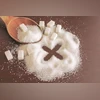A new study has found that all Indian salt and sugar brands, packaged or unpackaged, contain harmful microplastics in significant amounts, raising concerns about their impact on the human body.
Environmental research organisation "Toxics Link" on Tuesday said that a test carried out on 10 types of salt and five types of sugar, purchased from online and local markets, showed the presence of microplastics in all samples. The size of these microplastics ranged from 0.1 millimetre to 5 mm and was found in various forms such as fibre, pellets, films, etc.
According to the report, the highest quantity of microplastics was found in iodised salt at 89.15 pieces per kilogramme. Overall, the quantity ranged from 6.71 to 89.15 pieces per kg of dry weight in the salt samples. Organic rock salt had the lowest quantity at 6.70 pieces per kg.
In sugar samples, the microplastics ranged from 11.85 to 68.25 pieces per kg with non-organic sugar reporting the highest levels.
A PTI report cited past studies to say that Indians on average consume 10.98 grams of salt and around 10 spoons of sugar every day. This is much greater than the official recommended levels.
How much microplastics are Indians consuming in salt, sugar?
If the microplastics concentration in sugar ranges between 11.85 to 68.25 pieces per kg and given the daily average sugar intake of 0.04 kg (assuming one spoon of sugar weighs 4 gram), maths shows that the minimum average intake of microsplastics stands at 0.47 pieces while the maximum is 2.73 pieces.
More From This Section
For salt, the same calculation shows that the minimum and maximum microplastics consumption by an average Indian stands in the range of 0.07 to 0.97 pieces.
Combining the minimum and maximum values for both salt and salt, the value adds up to the range of 0.55 and 3.71 pieces of microplastics intake daily.
To be clear, these values only make up the intake due to salt and sugar. Other food items are also found to contain microplastics in different quantities.
Harmful impacts of microplastics
According to a scientific journal publication titled, ‘Microplastics in the Northwestern Pacific’, microplastics make their way into the human bloodstream directly through products which consist of them.
At a cellular level, microplastics’ potential impacts include permanent alterations to cell structures, mutations, and chronic toxicity. They are also a known source of carcinogens and can cause reproductive and developmental problems. Besides, they can also damage lung tissue.
(With PTI inputs)

)